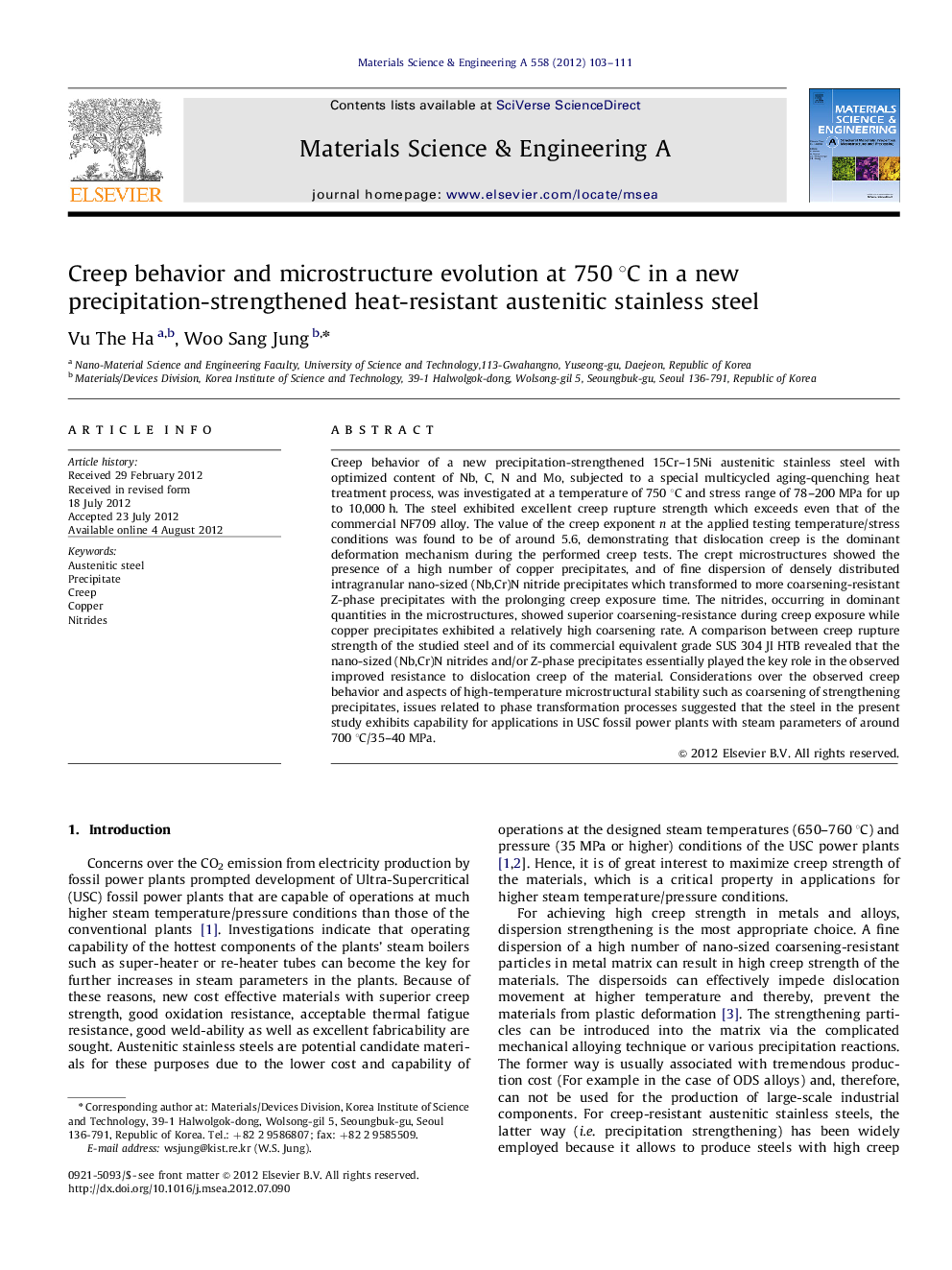| Article ID | Journal | Published Year | Pages | File Type |
|---|---|---|---|---|
| 1576744 | Materials Science and Engineering: A | 2012 | 9 Pages |
Creep behavior of a new precipitation-strengthened 15Cr–15Ni austenitic stainless steel with optimized content of Nb, C, N and Mo, subjected to a special multicycled aging-quenching heat treatment process, was investigated at a temperature of 750 °C and stress range of 78–200 MPa for up to 10,000 h. The steel exhibited excellent creep rupture strength which exceeds even that of the commercial NF709 alloy. The value of the creep exponent n at the applied testing temperature/stress conditions was found to be of around 5.6, demonstrating that dislocation creep is the dominant deformation mechanism during the performed creep tests. The crept microstructures showed the presence of a high number of copper precipitates, and of fine dispersion of densely distributed intragranular nano-sized (Nb,Cr)N nitride precipitates which transformed to more coarsening-resistant Z-phase precipitates with the prolonging creep exposure time. The nitrides, occurring in dominant quantities in the microstructures, showed superior coarsening-resistance during creep exposure while copper precipitates exhibited a relatively high coarsening rate. A comparison between creep rupture strength of the studied steel and of its commercial equivalent grade SUS 304 JI HTB revealed that the nano-sized (Nb,Cr)N nitrides and/or Z-phase precipitates essentially played the key role in the observed improved resistance to dislocation creep of the material. Considerations over the observed creep behavior and aspects of high-temperature microstructural stability such as coarsening of strengthening precipitates, issues related to phase transformation processes suggested that the steel in the present study exhibits capability for applications in USC fossil power plants with steam parameters of around 700 °C/35–40 MPa.
